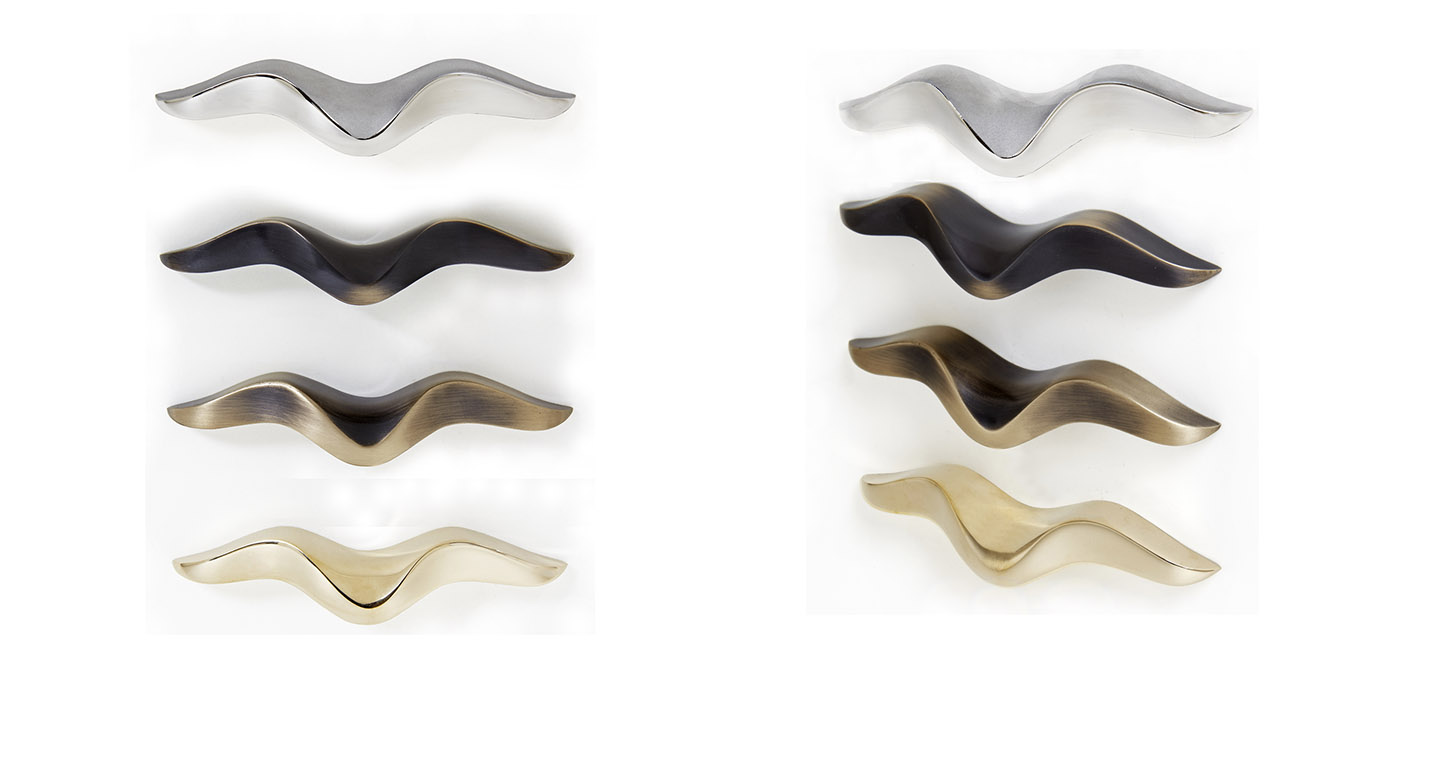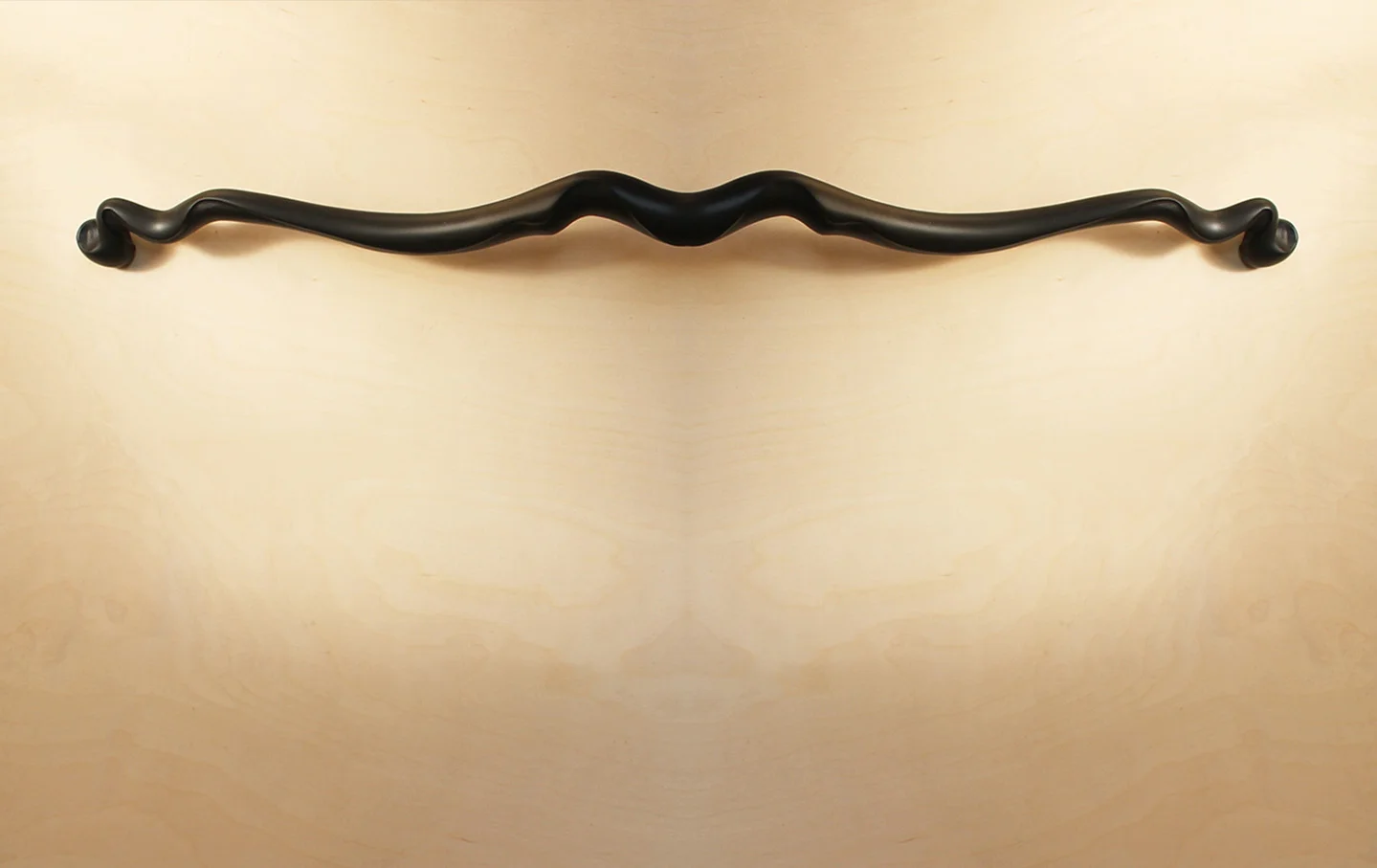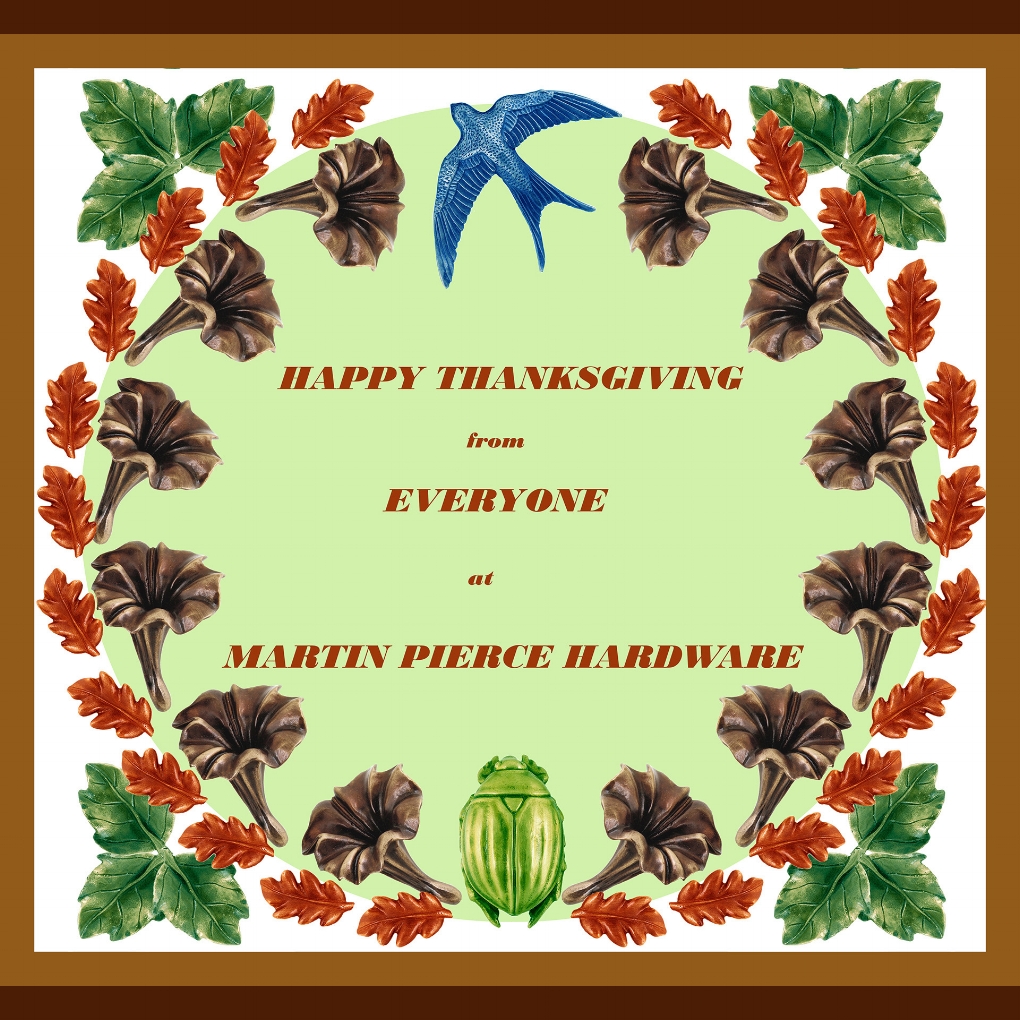We have in previous posts discussed how to create colorful patinas and oil rubbed finishes on bronze hardware, but we are often asked to create more understated finishes and are able to do so by brushing or sand-blasting or polishing the surface of the piece.
While the Ergo cabinet pull is contemporary in design it takes on a jewel like appearance when highly polished and becomes subtler when brushed or sand blasted to a low luster. As with most of our cabinet hardware this cabinet pull can also be ordered in silicon bronze which is a warmer golden toned alloy. Natural bronze, like stainless steel can also be highly polished for a mirror finish or brushed for a subtler effect.
Once the right amount of luster has been achieved color and highlights can then be added either by creating textural tones with polished and non-polished areas or by applying colored patinas to all or part of the cabinet pull.
In the group photograph the Ergo pull is shown in 4 quite distinctive finishes. The top view shows this 7” wide piece cast in stainless steel and finished in a two-tone luster with the face highly polished and the balance in a softer fine sand blasted finish that accentuates the shape of the wave design. The bottom picture shows the pull cast in silicon bronze and finely brushed. The center pictures demonstrate how the bronze tone can be developed from a light antique to an almost iron black finish using cold patinas that are sealed in place using with oils applied with a soft fine cloth.
























